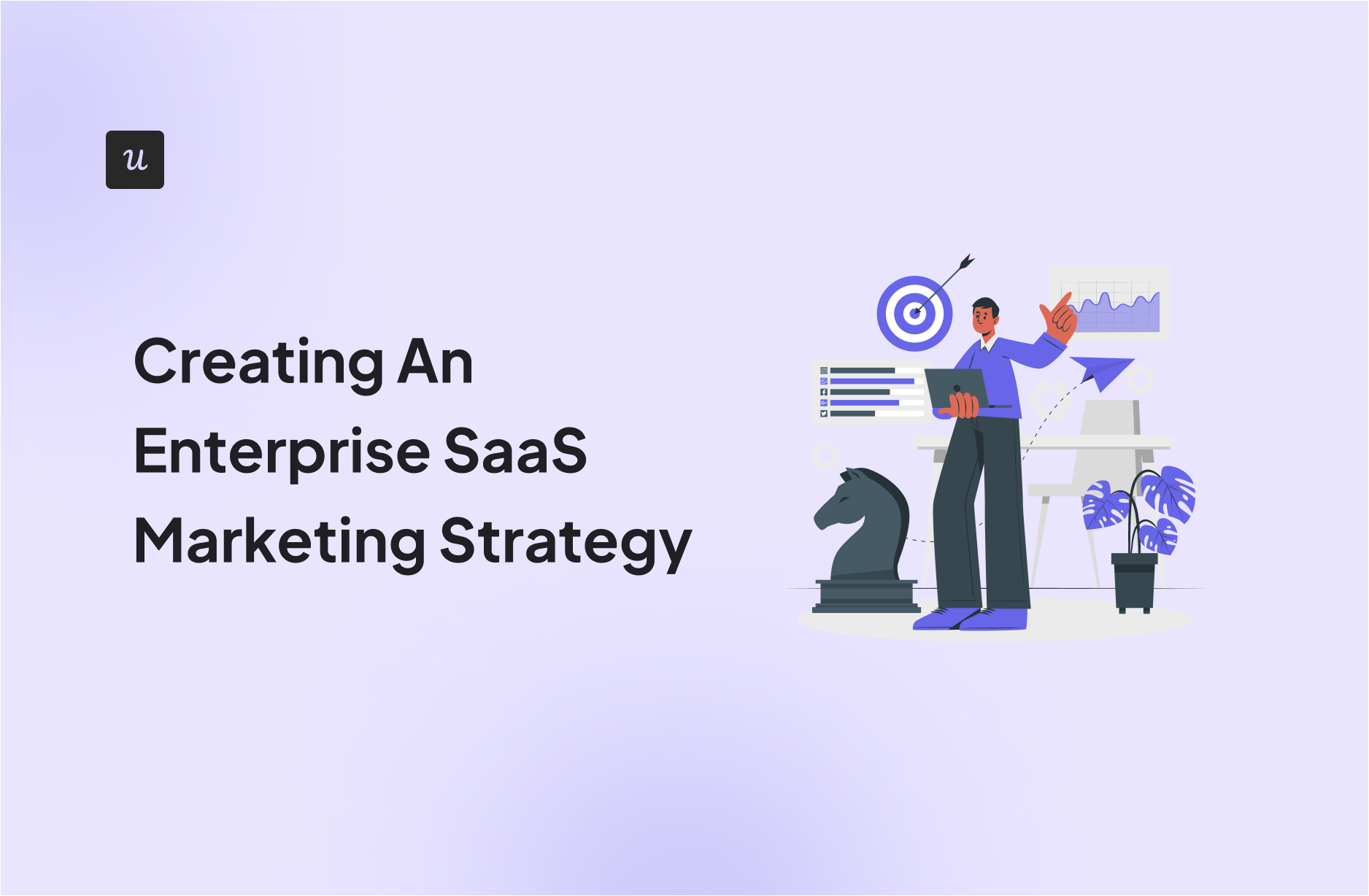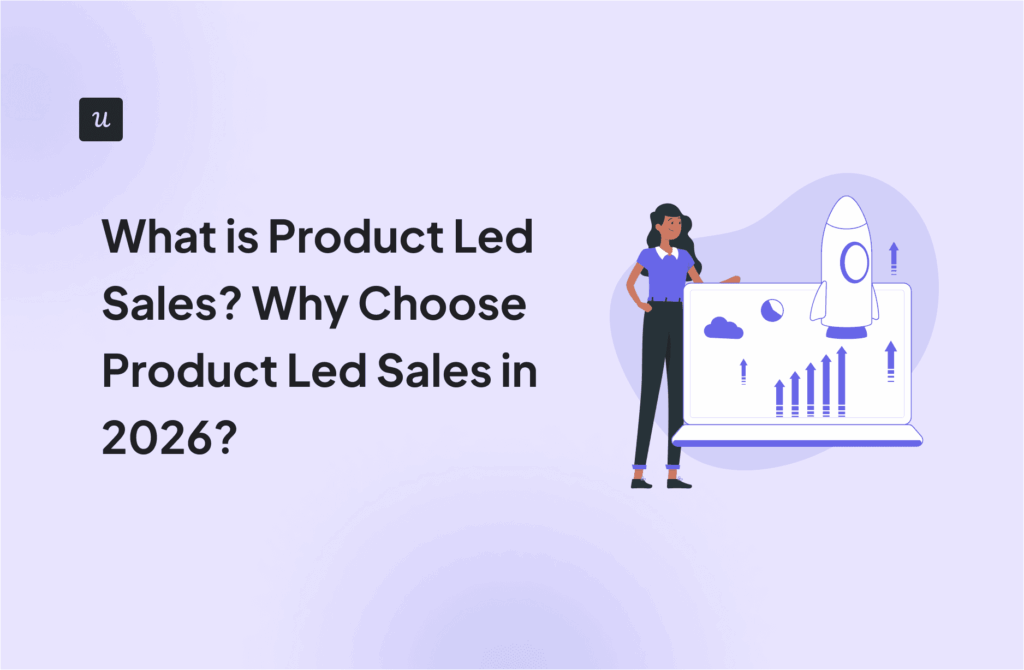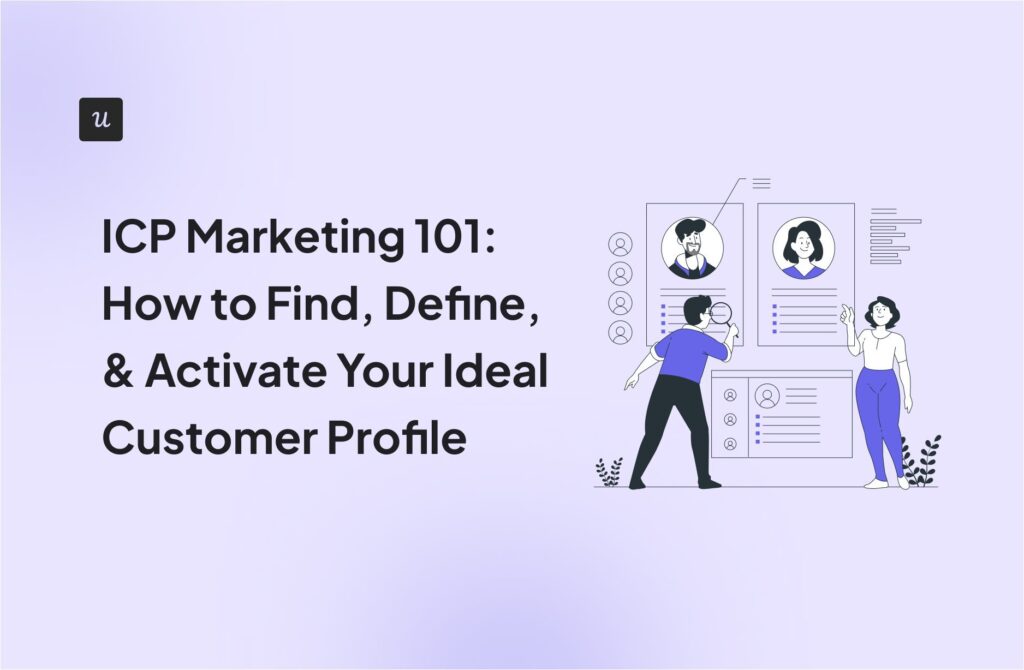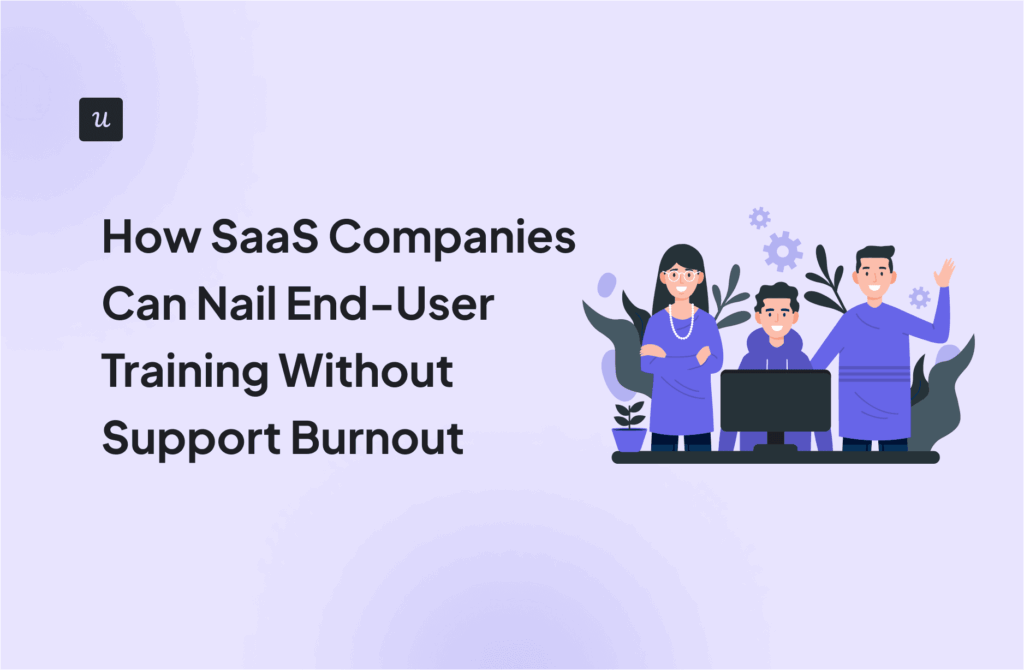
Try Userpilot Now
See Why 1,000+ Teams Choose Userpilot

What is enterprise SaaS marketing?
Enterprise SaaS marketing is the process of acquiring enterprise-level customers through various methods often centering around outbound marketing, account-based marketing (ABM), and paid advertising among other channels.
What is your biggest enterprise SaaS marketing challenge right now?
Which channel is most critical for your current enterprise SaaS marketing strategy?
How are you currently guiding users through your product to drive adoption?
Improving our product’s user onboarding would significantly impact our growth.
Unlock your product’s growth potential.
Your answers suggest that a product-led approach could solve your biggest enterprise SaaS marketing challenges by improving user activation, adoption, and retention. See how Userpilot can help you build beautiful in-app experiences without any code.
How is enterprise SaaS marketing different from downmarket/SMB-B2B SaaS marketing?
When you go from B2B SaaS marketing to enterprise or vice-versa, it’s not just the target audience that changes but the methods behind every marketing campaign as well. To help you distinguish between the two approaches, here are some differences:
Enterprise SaaS marketing (upmarket)
- Narrower target audience with higher customer lifetime value
- Longer sales cycles
- Emphasizes customer acquisition to close more high-ticket enterprise contracts with potential customers
- Uses inbound marketing methods like content and social media marketing for lead generation
B2B SaaS marketing (down market)
- Wider target audience with lower customer lifetime value
- Shorter sales cycles
- Emphasizes account expansion to generate new revenue from existing customers
- Uses outbound marketing methods like cold outreach and account-based management to pinpoint leads that align with the ideal customer profile or ICP
There are also transactional SaaS companies that take a hybrid approach: they use organic lead generation to acquire most of their customers but also have a sales team at the ready whenever high-ticket potential customers come around.
Challenges of the enterprise sales process
The quote below from our Head of Marketing, Emilia, sums it up properly:
“If an SMB is about to make a $30 purchase then they might just look at a few products on Google then make their decision because it’s not a significant investment. However, buying a $30,o00 product will take a big bite out of your marketing budget so you can’t make such a decision through comparisons alone.” -Emilia Korczynska, Head of Marketing at Userpilot
Now let’s check the detail and what this really translates to:
Higher costs
The first and likely most daunting challenge that faces enterprise SaaS marketers is the costs associated with outbound marketing. In general, acquiring new customers tend to be far more costly than getting your existing customers to spend more but that’s just the tip of the iceberg.
It’s easy to spend $100,000 or more on subscriptions to sales intelligence tools alone — tools that are essential to targeting high-ticket customers.
Beyond software costs, you’ll also be spending hundreds of thousands of dollars a year on the salaries of your Director of Demand and SDRs.
This is why many SaaS companies start out with a self-serve model and only expand to enterprise once they have enough cash on hand. It’s also worth noting that the large expenses can mean your business will pass the point of no return rather quickly, so think carefully before taking that leap.
Longer sales cycles
It should come as no surprise that the sales cycles for enterprise customers will be far longer than what you’d see with SMBs.
There’s a lot of paperwork and the people buying your product won’t even be the same people using it which adds another obstacle to overcome.
All this bureaucratic inertia means closing one lead can take weeks if not months.
When you combine the high burn rate of costly enterprise marketing with a long wait before seeing an ROI, it can be easy for companies to run out of gas and grind to a half before their prospective customers convert.
Businesses who use a transactional or hybrid approach will often endure the long sales cycle better since the steady income from their smaller users will keep the lights on until the enterprise customer signs on the dotted line.
Lack of information
Finally, a significant challenge that you’ll encounter is not knowing where your leads are in their journey. With self-serve businesses, you can safely assume that leads are aware of what their problem is and are looking for a product that can solve it.
That’s why their search engine brought them to you, right?
When your marketing strategy focuses on outbound, it’s not so clear. You don’t know if the person you’re talking to is aware of the problem their business is facing or is actively seeking out a solution to that problem.
Many large SaaS companies will go so far as to host conferences or workshops just to spread awareness across their target audience.
Regardless of which approach you take, you’ll often need to establish a long-running relationship with a company before you hear about their problems and get to pitch them.
How to create an enterprise SaaS marketing strategy?
Before going after enterprise customers, make sure that your product caters to their needs. This is not just about adding a new pricing plan called Enterprise on your pricing page.
You need to understand that an enterprise usually has different needs compared to an SMB: SOC 2 type compliance and priority support and robust SLAs just to name a few.
If you already have that covered, let’s move on.
When creating a SaaS marketing plan, you need to find the channels that yield the highest returns and closing rates then focus on them.
This 80/20 rule applies just as much when targeting enterprise customers so let’s take a look at a few approaches you can take.
Inbound or outbound for your enterprise SaaS marketing strategy?
Ignoring costs, outbound is the superior method for marketing your SaaS company to an enterprise audience. This is because the ideal customer profile in enterprise marketing is so specific that you can’t wait for the customers to go to you.
Marketing teams need to proactively hunt down every company and executive that has the potential to become a customer.
It’s expensive and time-consuming but it’s the most reliable way to get those high-ticket contracts that everyone wants.
In fact, even traditional marketing methods can be utilized in an outbound marketing campaign. You’ll often find CMOs of some of the largest SaaS companies hosting or attending live events to grow their network and find qualified leads.
Account-based marketing for enterprise SaaS
The majority of enterprise products are inherently complex and take a lot of time to integrate which is why account-based marketing is so essential.
You need to take a more personal approach and customize and personalize each message at each touchpoint along the journey to be specific for each account you are trying to convert.
Talking to product managers and addressing their pain points is not enough. An account-based marketing approach will mean talking to the PM of company X that has this specific problem no one else has.
It’s true that there’s more inertia to enterprise customers and they’re less likely to churn due to the longer sales cycle, but that doesn’t mean you can neglect their user experience.
Ensuring a strong mobile user experience is part of this, and with mobile SDK, you can create targeted onboarding flows using slideouts, carousels, and push notifications without writing extra code.
Even if they don’t churn immediately, their cancellation is imminent if the product isn’t meeting their needs.
The role of paid advertising in enterprise SaaS marketing
While PPC plays a role in most SaaS marketing strategies, it becomes extremely expensive really quickly. Testing which paid channel to focus on at what budget, which demographic, which copy/imagery to use, etc. are all important for success here.
Content marketing or other forms of inbound marketing are often sufficient to generate more MOFU or TOFU traffic with some consistent BOFU leads but paid ads are great at bringing in ready-to-purchase or consideration-stage customers.
As our growth manager Tiana He would explain it:
“PPC is like going to the grocery store, whereas organic SEO is growing your own crops. Organic channels often take longer to nurture and grow, but in the long run provide more cost-effective returns. PPC is faster and you get to choose exactly what you want but it’ll come at a higher cost.”
Tiana He – Growth Marketing Manager at Userpilot on PPC vs SEO
Social media and enterprise SaaS marketing
Social media marketing is often seen as a B2C marketing strategy but it can also work in an enterprise context if you take the right approach.
Rather than sharing blog posts on your company page to appeal to a wider target audience, you can start with identifying your ICP (ideal customer profile) and concentrate your lead generation efforts on them specifically (we suggest getting creative here).
If your ideal customers are active on a certain channel — e.g. Quora — it’d be important to have a presence there.
You could also create or join a Facebook group (you can join the Userpilot one here), Slack group, or Subreddit of your choosing to engage with your ideal customers!
When you have unique freebies or even more valuable content to share, you can consider starting an email newsletter, if you have someone to consistently manage the email marketing.
The key to organic content marketing is that it’s engaging, free, and conversational. Getting into a routine of posting consistent, high-quality, and valuable social media content for that ideal customer profile (ICP) builds an engaged following. Organic social media marketing is not meant to drive leads right away. Instead, you should aim to build brand awareness, engagement, and trust over time!
How demand generation benefits SaaS marketing campaigns
As your product rises on the SaaS pricing ladder, prospects will want more information before they commit to a subscription.
The people who buy expensive software solutions want to be 100% sure that the product is right for their needs from the get-go.
You’ll need to go the extra mile in educating prospects and customers alike on the value your product provides. Whether this comes in the form of live workshops or demo sessions, you want them to be familiar enough with the value of the product that it’s the first option that pops into their head.
Why should I target enterprise customers?
Aside from the obvious answer of high-ticket customers being more appealing, it also comes down to your product and users.
If your product costs $200/month but could be sold for $2,000/month as an enterprise solution after adding a couple of features, how can you justify not evolving it?
Alternatively, you may have a large user base of customers whose needs are getting more complex by the day. They might as well be begging you to create pricier plans with more features so you either answer their calls to spend more or they’ll move to a competitor who will.
“There are two reasons people start targeting enterprise, either you outgrow your customers or your customers outgrow you.” –Yazan Sehwail, CEO of Userpilot
Conclusion: are you hunting moths or elk?
At the end of the day, SaaS marketing strategies come down to what you’re hunting. If you’re hunting moths then you can set up a UV light and they’ll go towards it.
However, it will take a large number of moths to recoup the cost of the lamp.
In contrast, those hunting elk may have a higher startup cost to get a quality rifle but it only takes a couple of trips to make your money back. Neither strategy is objectively better or worse, they’re just different approaches for different customers.
One is low-cost and passively brings SaaS customers in overtime while the other can be very expensive and hands-on but yields greater rewards if you pull it off. It’s all about considering what you want out of your company and which tried and tested SaaS marketing strategy will get you to those goals.







